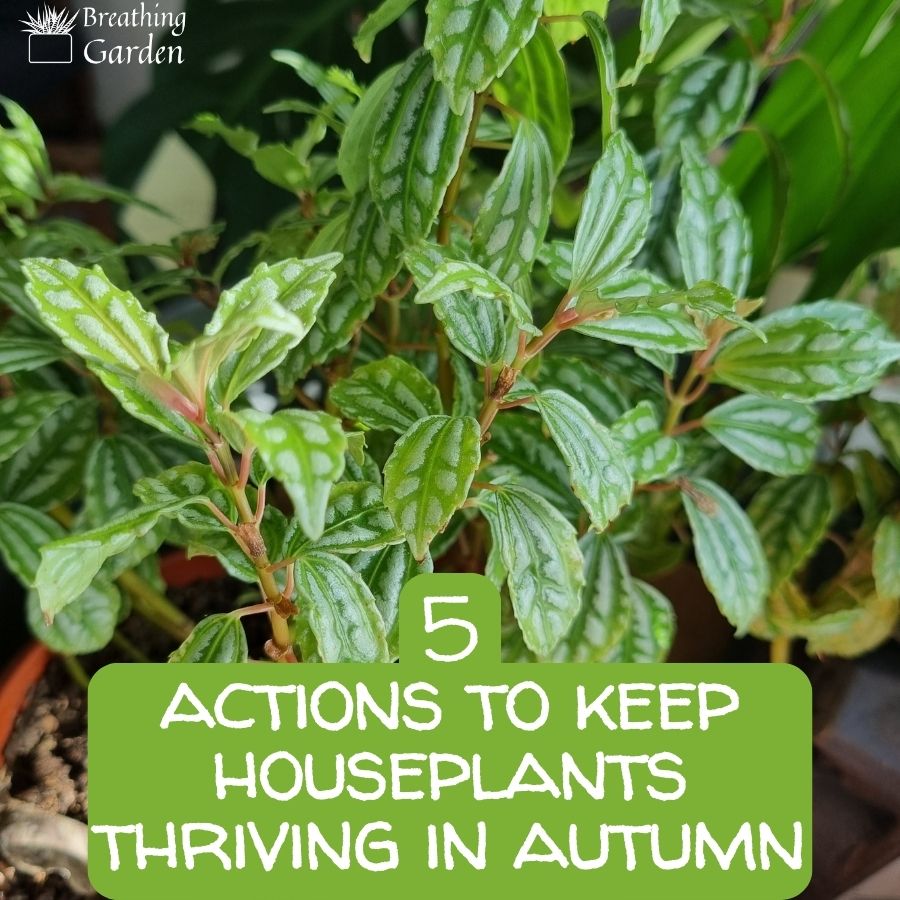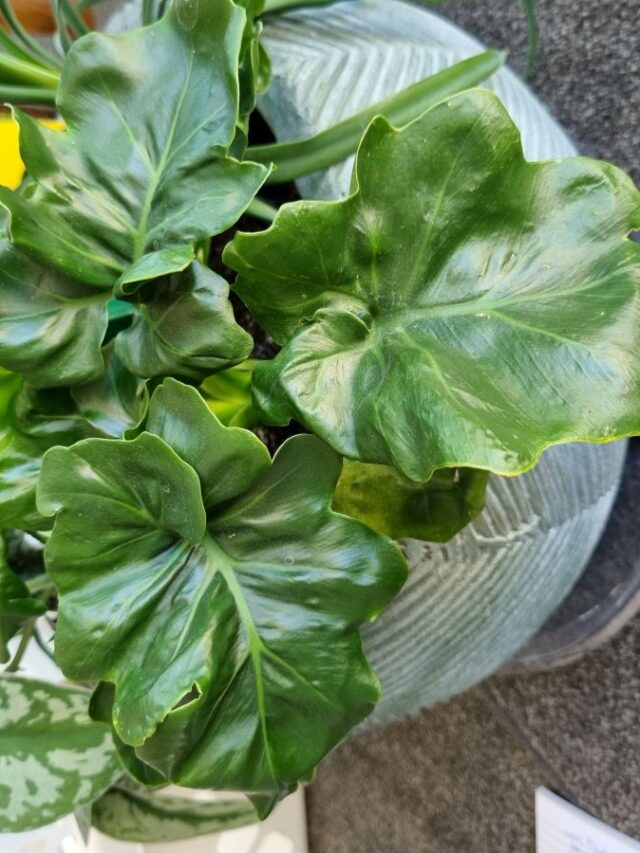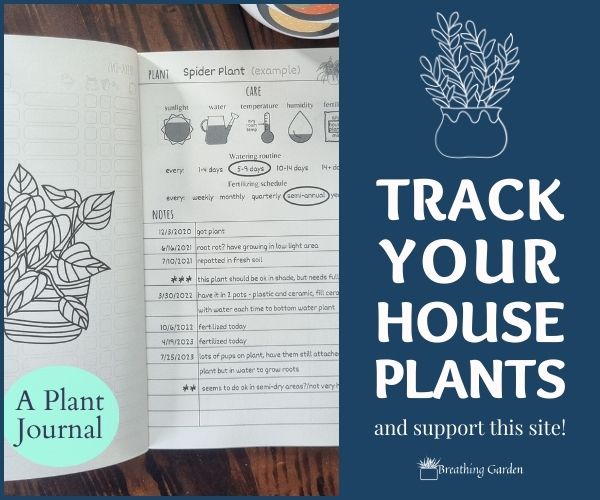Autumn is a beautiful season with enjoying the changing colors of the leaves outside and cooler temperatures. Unfortunately, for houseplant lovers, autumn also means it’s time to make a few changes in the way you care for your plants.
*This post may include affiliate links. When you purchase items from these links, we will receive a small commission, at no extra cost to you, to help support this website. Thank you for your support! Read more ->
With the shortening of daylight hours, lower temperatures, and less moisture in the air, it’s important to adjust the way you care for your plants so that they can survive until springtime. Here are five actions you can take to ensure your houseplants stay healthy and thriving in the fall!
1 More Sunlight & Fewer Drafts: Move Your Plants!
One of the most important things to do when the season changes for the colder is to move your plants around. There’s so much less light in the autumn and winter that you want to move your plants closer to windows or to different facing windows to ensure they get adequate lighting. (South facing windows are a good option for these months)
But on the same topic of moving plants around, try to avoid having these plants in drafty areas or directly next to the window’s glass. These spots are going to be colder than the rest of the house.
Ideal place to move your plants to is: sunnier parts of your home, but also at least 1 foot away from the windows so they aren’t exposed to such extreme temperature fluctuations.
2 Expect Less Growth: Lessen Watering & Fertilizing
As the temperatures decrease and the days become shorter, your houseplants’ growth will slow down. This means they will likely need less water and fertilizer than they did during the summer. To avoid overwatering, make sure to check the soil moisture level before watering your plants. If the soil is still damp, delay watering until it dries up a bit.
You can also reduce fertilizing, maybe only once through autumn and then fertilize again in spring. If you fertilize the plants like you were during summer, they’re more likely to get root-burn from an excess of nutrients in the soil.
3 Get In The Last of Repotting Your Plants
Autumn is a great time to repot plants before they become dormant and growth significantly slows. This will give your plants a chance to acclimate to their new environment. Repotting will also allow for root inspection and refreshing the soil with some nutrients.
When repotting, choose a pot one or two inches larger in diameter than the previous pot size and make sure the pot has drainage holes. (Or trim back the roots and repot into the same container). Be sure to not water too much with these repotted plants!
4 Pruning: Cut Back Plants & Remove Dead Branches/ Leaves
Autumn is the time to give your plants a good trim. This includes removing dead, damaged, and diseased branches or leaves. It will help keep them healthy and promote new growth in springtime. If you notice any pests on the plants, prune off these areas too so that they don’t spread further!
You can also use this opportunity to shape the plants as desired, or trim them back to what feels like a reasonable size to you.
You may be interested: How to make a Lavender Topiary
5 Save Your Outdoor Plants: Bring In Before Frost
When the nighttime temperatures start dipping, it’s time to bring any potted outdoor plants inside so they don’t freeze in the cold.
This is only necessary if you live in a colder environment where the temperature drops significantly below freezing. If you’ve got plants that can survive the frost, these are also not necessary to bring inside. (Find your climate hardiness zone here)
Make sure you inspect them for any pests before bringing them indoors and spray a light insecticidal soap if necessary. Try keeping these plants in a separate area for a few days so any bugs that do come inside don’t infiltrate your other houseplants!
Consider pruning them back a bit and acclimating plants to the lower light levels. Bringing them inside in stages, allowing some time for adaptation to indoor humidity and temperature levels to prevent plant shock.
In Summary: Caring for Houseplants in The Fall
Caring for houseplants in autumn requires a few adjustments. Reduce watering and fertilizing, move plants away from drafts, and provide more sunlight. Prep outdoor plants gradually before bringing them indoors. These tweaks ensure your plants thrive through autumn and winter, keeping your house green and happy all through the cold, long nights!




